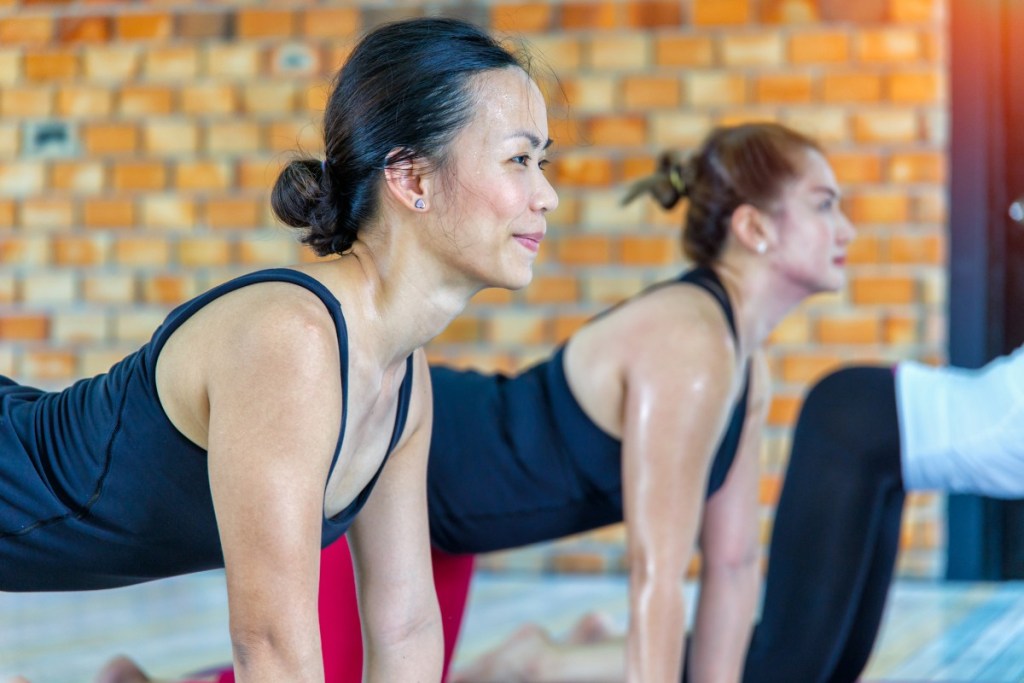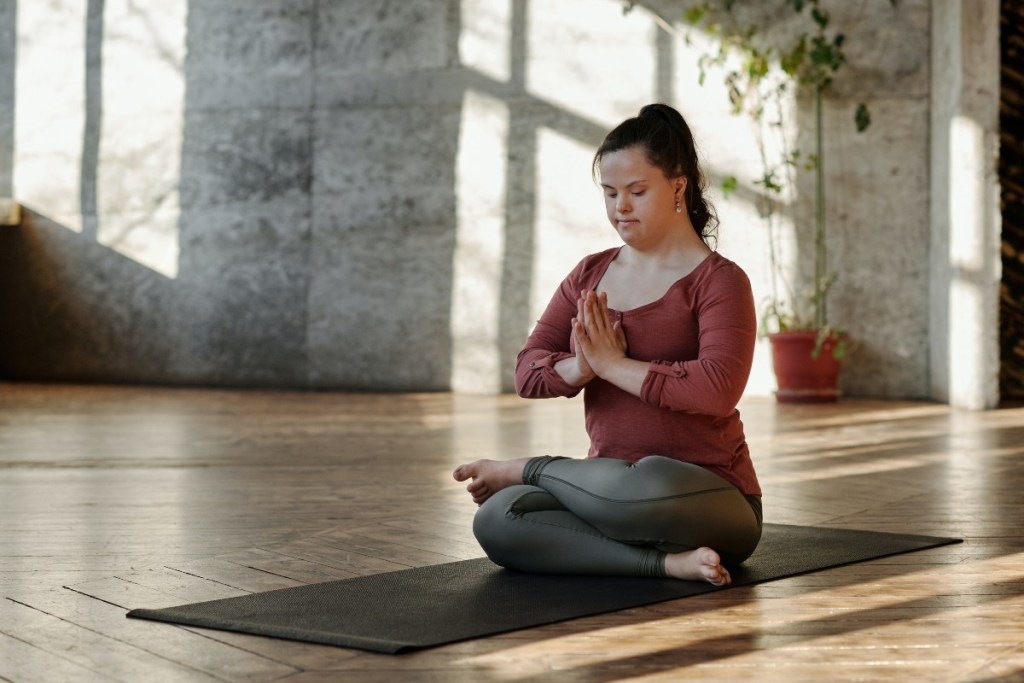What do you think of when you hear the word “yoga?” People tend to envision gentle movement and stretching, thinking of this as a relaxing activity that’s a boon to our mental health.
However, if you think yoga is just a light activity to limber up sore muscles, think again. Certain forms of yoga, especially hot yoga, are changing the way we think about this exercise, highlighting how it can be an intense plyometric workout as well. With celebrities like Meghan Markle swearing by it, you might be wondering if this practice really lives up to the hype. Here’s what you need to know before jumping into the studio for the first time.

What is hot yoga?
As the name implies, hot yoga is practiced in a heated room. The temperature varies, but typically the rooms run between 80 to 105 degrees Fahrenheit. In other words, your session could feel like a slightly balmy summer day or a scorcher depending on the studio and the instructor. This heat makes the session feel more intense, elevating your heart rate to the point where it’s akin to a brisk walk. As a result, hot yoga is also a cardiovascular exercise that can burn more calories than regular yoga.
Hot yoga is often used interchangeably with Bikram yoga, but Bikram is actually one of many forms of hot yoga. Bikram studios have specific standards, so the rooms must be set to 105 degrees and 40 percent humidity. Other hot yoga sessions may have music, clapping, and interaction with classmates and the instructor, whereas people practice Bikram in silence.
Why is hot yoga good for you?
Like regular yoga, hot yoga improves flexibility, lowers stress levels, and may even ease symptoms of depression. Though you’re sweating, hot yoga can actually be very meditative. You need a more intense focus on your breath to stay engaged in the exercise, leaving little room to contemplate everyday stressors.
Because hot yoga helps you torch more calories than regular yoga, it may be better for weight loss when paired with a well-balanced diet. This practice may also improve blood sugar levels in obese adults.
Is hot yoga dangerous?
Generally, hot yoga is safe but it’s not for everyone. While it’s always a good idea to consult your doctor before beginning any new workout, you’ll definitely want to ask about hot yoga if you have any of these issues:
- You’ve suffered from heatstroke — even just once.
- You get tired, dizzy, or dehydrated quickly. Conditions like diabetes may make you more prone to these issues.
- You have high or low blood pressure or a heart condition.
- You struggle with muscle or joint pain.
- You have any type of arthritis.
- You’re pregnant.
Whether or not you’re prone to dizzy spells or dehydration, hydrate frequently during the class to stay safe and get the most out of your workout.

What should I bring to my first hot yoga class?
If you’re ready to give hot yoga a try, you’ll want to have a few things on hand before heading to a class (or adjusting your thermostat so you can do it from home):
- Moisture-wicking leggings absorb sweat and can keep you feeling comfortable as you flow through opening poses. Opt for a light, fitted top, such as a tank top, in a sheer or mesh material. These types of tops are breathable but will also stay put as you move around the mat.
- Many yoga studios have mats available, but bringing your own is always the most hygienic option.
- If you have long hair, use a hair tie to pull it back into a bun or ponytail. You want to keep it in place to prevent it from sticking to your neck as you sweat.
- A water bottle is an absolute must — you need to stay extra hydrated in the heat.
All in all, hot yoga is a great workout for anyone looking to improve their heart health, torch calories, and reduce anxiety, stress, and depression. If you’re new to hot yoga, ask your doctor if they think it’s okay, particularly if you are pregnant or have a condition, such as hypertension or diabetes, that makes you faint easily. Once you get the all-clear, grab a mat, a water bottle, and your most breathable gear to get your hot yoga session up and running.
BlissMark provides information regarding health, wellness, and beauty. The information within this article is not intended to be medical advice. Before starting any diet or exercise routine, consult your physician. If you don’t have a primary care physician, the United States Health & Human Services department has a free online tool that can help you locate a clinic in your area. We are not medical professionals, have not verified or vetted any programs, and in no way intend our content to be anything more than informative and inspiring.



